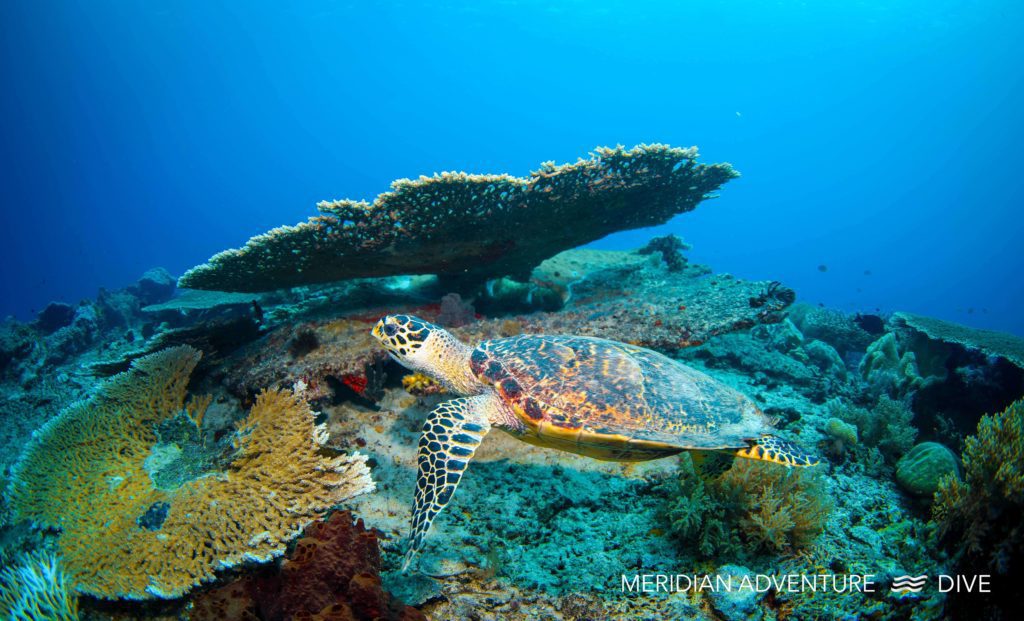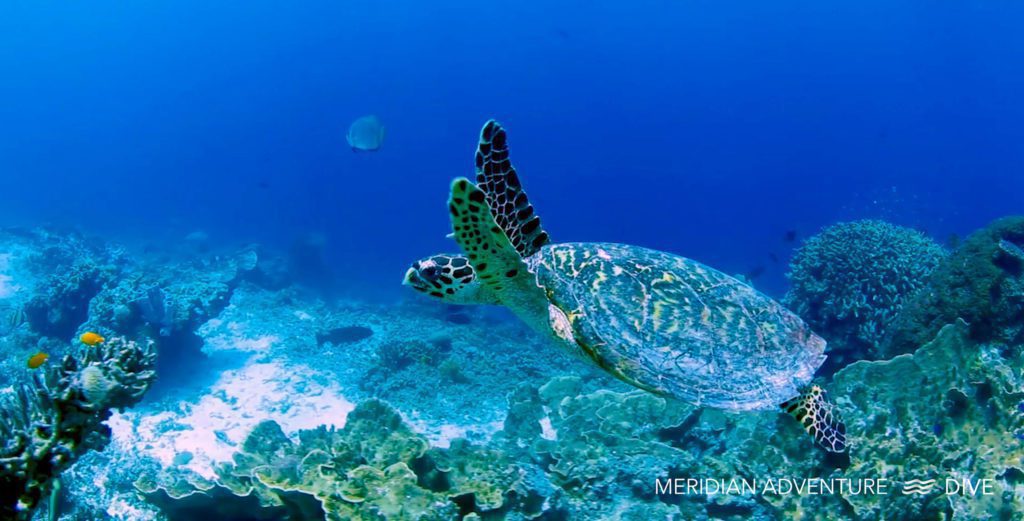The Raja Ampat Creature Feature Series: Turtles
Raja Ampat is the perfect diving location to find four of the seven ocean turtle species of the world. The area is an official sea turtle sanctuary and home to the Leatherback, Green, Hawksbill, and Olive Ridley species. While it is more common to encounter the Green and Hawksbill in the Waigeo region, the Leatherback and Olive Ridley have been known to nest in some of the more remote and less-visited areas of Raja Ampat.

Turtles are a common sighting in the area, with many dive sites being the permanent habitat of individual turtles. One such site is Sauwandarek Jetty, which is home to a massive Green Turtle found in the rock formations not far from the Jetty.
While to most divers, these species of turtles will look the same, some defining characteristics make it easier to identify each.
Both the oldest and the largest of the turtle species are Leatherback turtles. This species is believed to have survived the dinosaur extinction. They can grow up to an impressive size of over 2m and weigh 900kg. While their size alone should be enough to identify these turtles, they also have a softer shell structure than other turtles that resemble leather, hence the name.

Green turtles are one of the larger turtle species growing to sizes up to 1.2m. The species are listed as endangered because their eggs are considered a delicacy in some regions. The Green turtle is the only turtle species classified as a herbivore, feeding primarily on seagrass. The Green turtle gets its name from the greenish colour of fat and cartilage rather than the colour of its shells.
As the name suggests, Hawksbill turtles are easily identified by the hawk-like shape of their beaks. This sharp protruding beak is perfectly adapted to feed on sponges found in the cervices of reefs. These sponges are toxic to most other marine species and, if left unchecked, could overgrow and suffocate other coral formations. The Hawksbill turtle is one of the smaller turtle species growing to sizes of up to 90cm. These turtles are often encountered gracefully swimming over reefs and slopes or busy feeding on shallow reefs.

While the Olive Ridley might not be the best-known turtle species, they are the most populous species worldwide. This tiny turtle only grows to 70cm and is often incorrectly identified as a Green turtle due to its olive-green shell colour patterns. Despite the small size, the species are migratory and will travel significant distances between their feeding and nesting areas. This turtle is known to dive as deep as 150m to feed on crustaceans found on the sea bed.
Turtles play a vital role in the marine ecosystem. Most turtles will feed on jellyfish, which keeps the natural balance in check. Unfortunately, jellyfish commonly feed on more minor and juvenile fish species, and without turtles keeping the jellyfish numbers controlled, these fish species run the risk of becoming endangered over time.

Turtle numbers are drastically declining worldwide, with Raja Ampat being one of the most important protected areas globally for the survival of the species. While diving the area, take the time to appreciate the incredible critters in numbers unheard of in other world regions.
About Meridian Adventure Dive
Situated in Raja Ampat, Indonesia, Meridian Adventure Dive is a PADI 5 Star Resort and winner of the PADI Green Star award. Scuba divers enjoy our professional services that have become synonymous with both the PADI and Meridian Adventure names.


